PRESTO PLANS
Sent straight to your inbox
CLICK HERE TO ACCESS
Sign up to receive 10 ready-to-use ELA resources your students will love!
10 FREE ELA RESOURCES
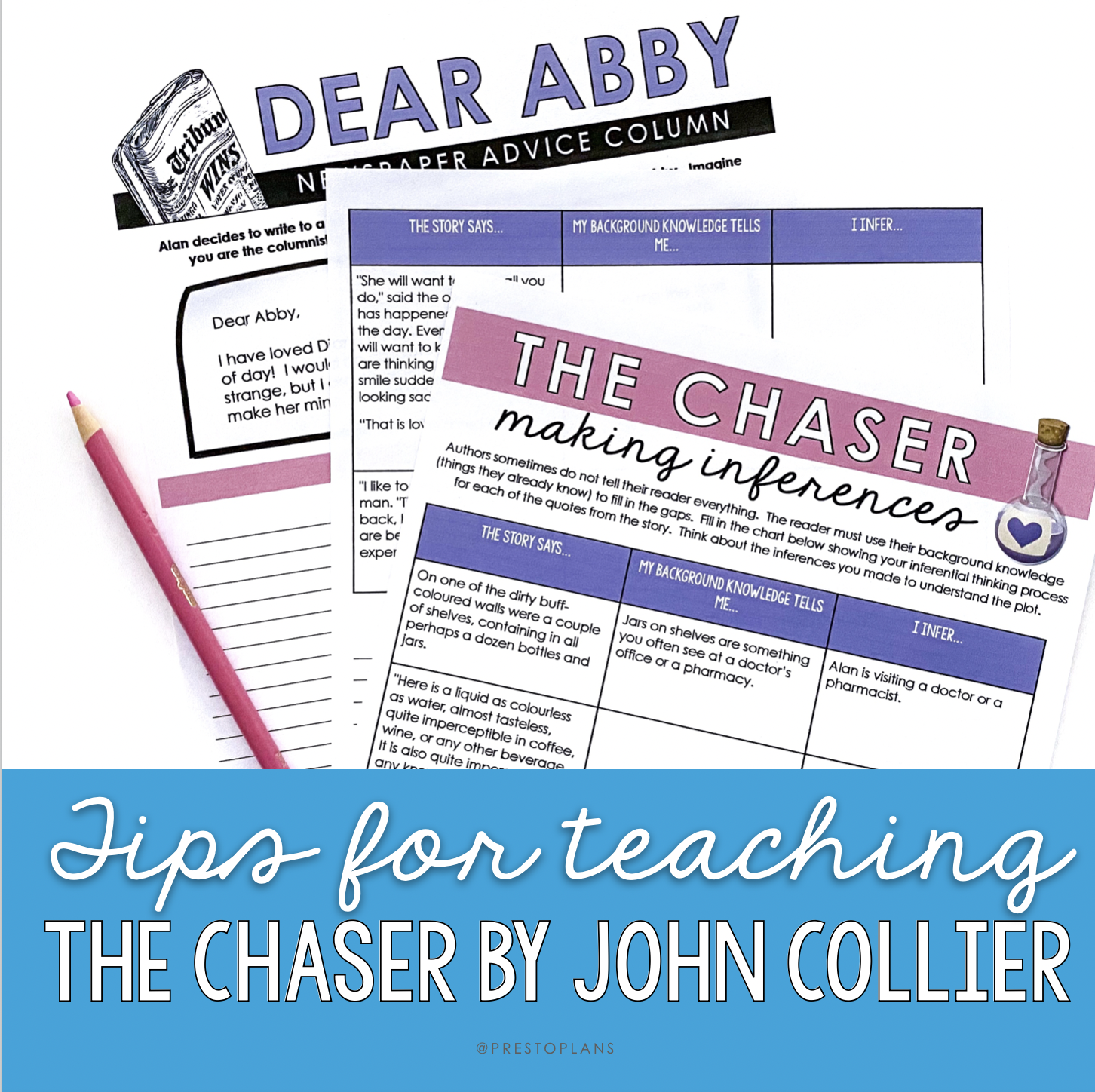
Teaching The Chaser by John Collier
If you are teaching “The Chaser” by John Collier, you might be looking for strategies and tips for analyzing this love-inspired story. I wanted to share my best tips for helping you guide your students through all elements of this classic tale!
At first glance, this short story seems quite light-hearted, but there is more to this tale than first meets the eye. Alan Austen is a young man who is enchanted by Diana, a woman who doesn’t return his affection. Initially, he sets out to buy a love potion to capture her attention. But things take a dark turn when the mysterious potion-seller, known as The Chaser, reveals the true price he might pay to fulfill his desires.
So, where to begin when teaching this short story? Below are some tips to bring it to life for your middle or high school students.
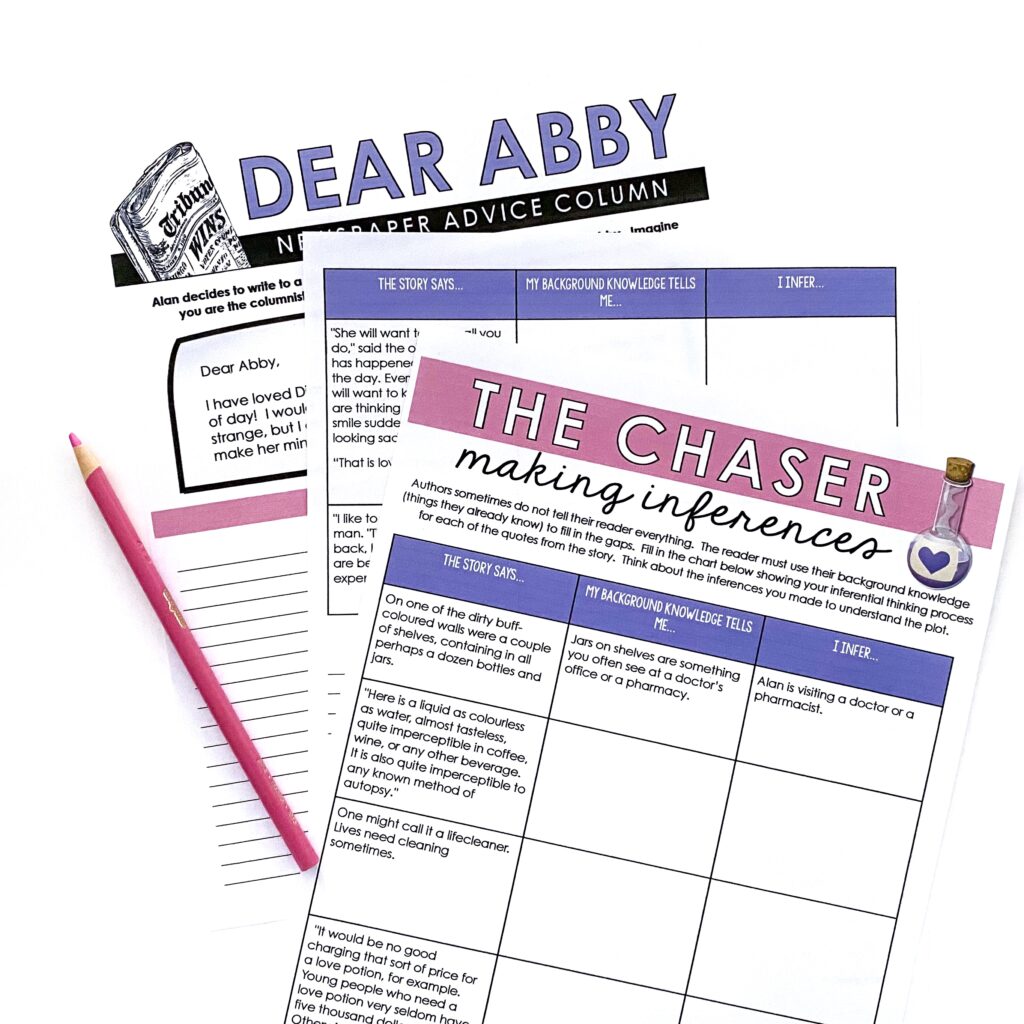
Build Background Knowledge
When teaching any short story, including “The Chaser” by John Collier, I like to begin by providing students with a bit of background information. First, I like to share some details about Collier himself. This British author, born in 1901, wrote in a variety of different styles, including novels, short stories, and screenplays. Best known for his short stories, Collier’s writing has been praised by authors like Roald Dahl and Ray Bradbury. Although he wasn’t widely recognized in his own country, he garnered significant recognition in the United States.
From here, I like to prompt students to think critically about the title “The Chaser” and make a quick prediction about what the story will be about! This can work well as a quick “think-pair-share” activity, in which students take a moment to jot down their own ideas before discussing them with a partner. Finally, each partnership can share their ideas with the class!
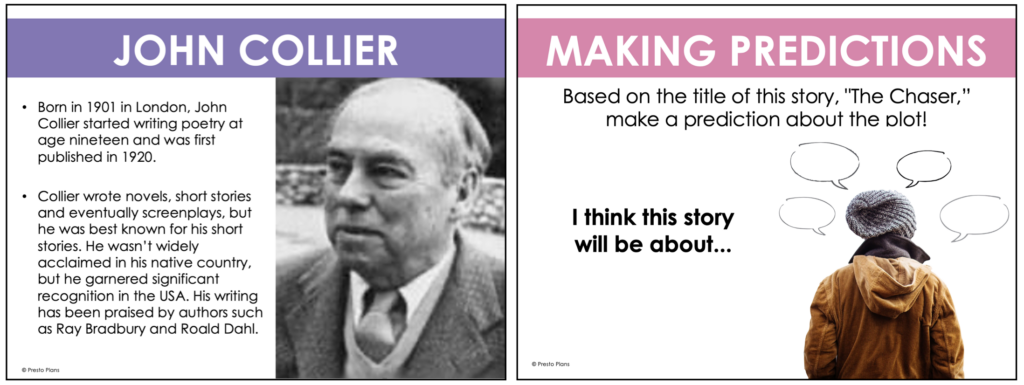
Pre-Reading Discussion
Once students have made their initial predictions, I like to focus the lesson by leading a brief whole-class discussion. I like to kick off the conversation by prompting students with a series of questions:
- Can money buy love?
- What does a healthy relationship look like?
- Where do you draw the line between love and obsession?
Depending on your classroom, you can set the questions up as stations in your classroom, or write them on chart paper (students could jot down their thoughts on sticky notes, then stick them to the paper). Alternatively, you might prefer to have your class discuss the questions in small groups, or all together! However you choose to engage with the questions, I recommend that you wrap up with a brief whole-class discussion, so that everyone is on the same page before they begin to read.
Reading the Story
Now, it’s time for students to read the story. I find that this story presents a great opportunity for students to practice their inference skills. With this in mind, it’s useful to spend a few minutes teaching about inferences before they begin reading “The Chaser.”
You know your class best! Students can read the story independently, or you can read it to them! If you are able to make flexible groupings, it can be a good idea to let students decide. It’s often the case that some prefer to read on their own, and some prefer being read to. I like to prompt students to keep an eye out for inferences as they read, as this will support them in the Making Inferences learning task later on!
Post-Reading Discussion
Once the class has finished reading “The Chaser,” the next step is to unpack the text in a brief post-reading discussion. This short story is surprisingly complex, and there are many twists and turns for students to explore. First, I like to ask whether their initial predictions about the story were correct. From here, I ask students to reflect on which elements of Collier’s story are realistic, and which are unrealistic.
Next, I invite students to share their thoughts on the story’s cliffhanger ending. Why do they think Collier chose to end “The Chaser” in this way? What do they think happened after the end of the story? Finally, I like to circle back to the pre-reading discussion, when students had to make a prediction based on the story’s title. When teaching this text to middle and high school ELA students, I like to ask: Why might the story be called “The Chaser,” and what does this title suggest?
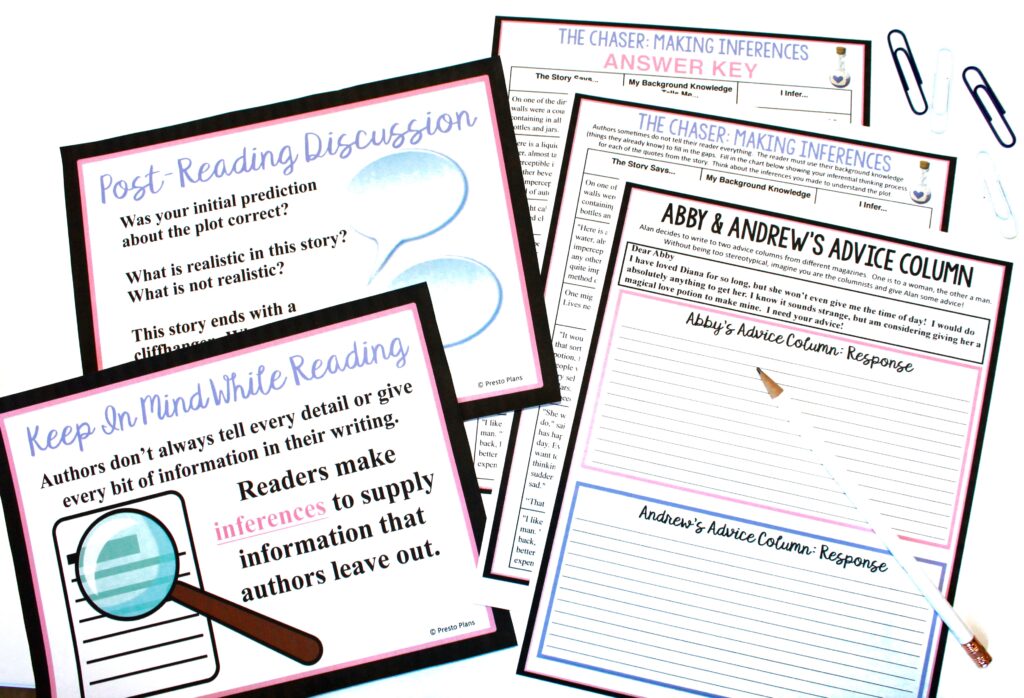
Reading Questions
Now that students have a good handle on the plot of the story, and have had an opportunity to discuss it with their classmates, reading questions can be a useful way to check for overall comprehension. When teaching “The Chaser,” I like to incorporate reading questions in a variety of different ways. They can serve as a formative or summative assessment tool or a springboard for further discussion between pairs or small groups of students.
Sometimes, I even cut up a sheet of reading questions, and hand them out so that each student has a different prompt to respond to! This can be especially helpful if you are looking to quickly differentiate this task. As students respond to the questions, I find they appreciate a reminder to use evidence and examples from the text to support their thoughts.
Making Inferences Activity
Because “The Chaser” offers so many opportunities for students to practice making inferences, I like to support this skill with the Making Inferences Activity. To start, I find it helpful to remind the class what an inference is. Explain that authors often do not “tell” their readers everything they need to know. This means that the reader must use their background knowledge (things they already know) to fill in the gaps.
For this task, I like using a graphic organizer that helps students visualize the three steps involved in inferential thinking. In the first column of the organizer, students read a quote from “The Chaser” and consider its meaning. In the middle column, they can consider their background knowledge in relation to the topic. Finally, they can combine what they already know with the information provided in “The Chaser” to make an inference, drawing a conclusion about the plot of the story.
For example, students can consider the quote: “On one of the dirty, buff-colored walls were a couple of shelves, containing in all perhaps a dozen bottles and jars.” From here, students can make inferences about the quote. If Alan is in a location with a collection of bottles and jars on shelves, he could possibly be visiting a pharmacy, or another location where medical supplies are sold. When they have finished completing the organizer, students can share a brief final reflection on inference, making a connection to the story.
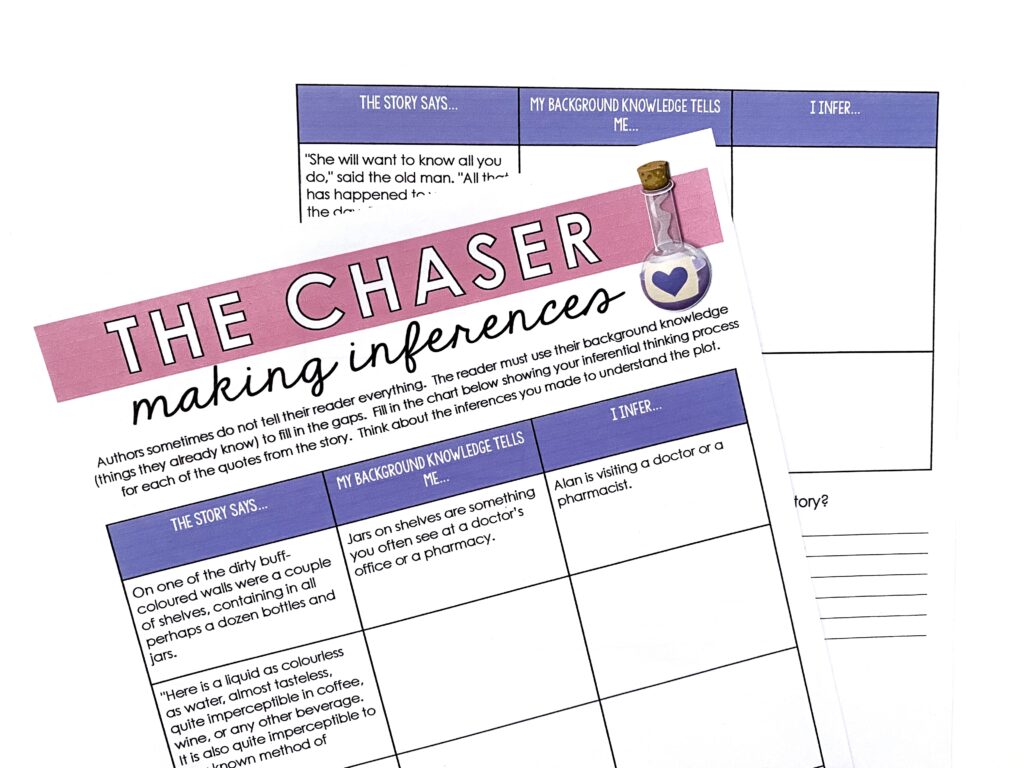
Newspaper Advice Column Activity
When teaching “The Chaser,” you can expand on students’ understanding of the story by incorporating a final creative activity! One task I find works well with this text is the Newspaper Advice Column. I like to begin by sharing the idea of “Dear Abby” – a daily or weekly column in the newspaper, where readers send in letters about their problems and receive advice.
For this task, students take on the persona of “Abby” or another advice columnist. First, I like to provide them with a brief letter from Alan, in which he wonders whether he should administer a love potion to Diana. With his query in mind, students then have to compose a thoughtful and empathetic response to Alan, advising him on what to do.
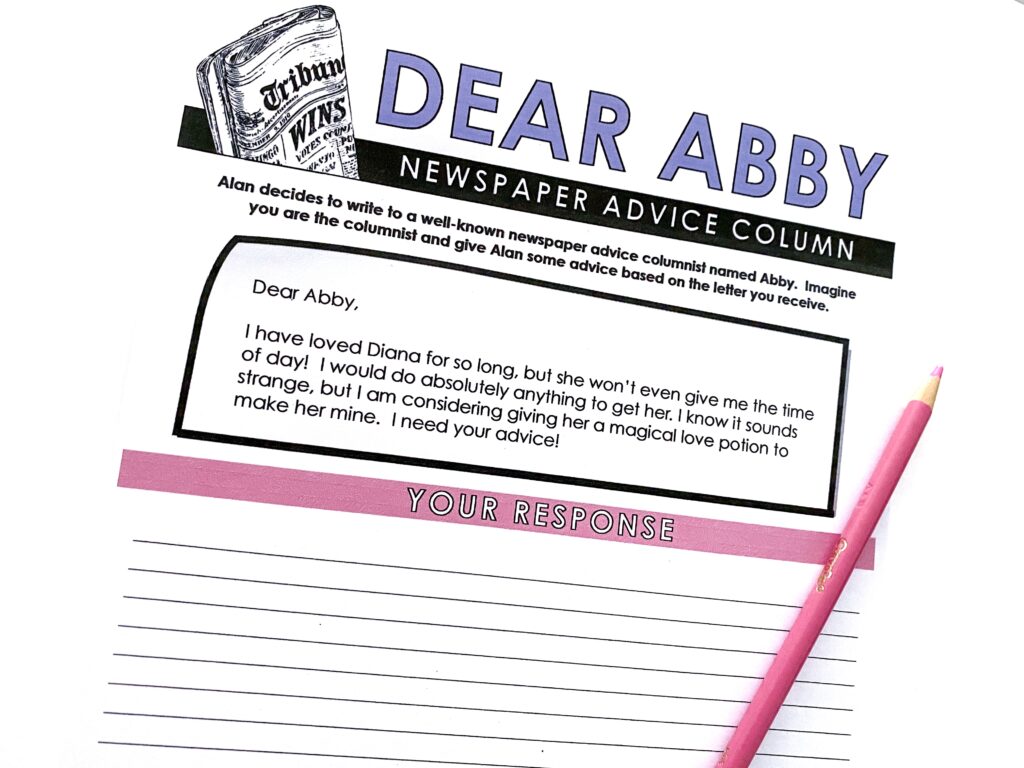
There you go! I hope you have fun teaching “The Chaser” in middle or high school ELA this Valentine’s Day! Grab a ready-to-use resource bundle with everything you need to teach this story below.
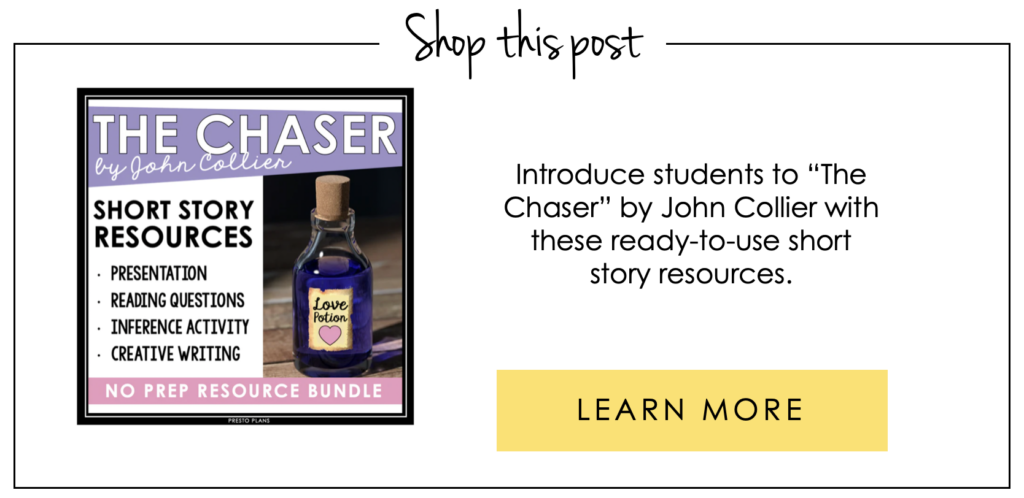
Looking for more ideas for short stories to teach in middle and high school ELA? Check out my blog posts with tips for teaching “The Lottery” by Shirley Jackson! Or, if you want more Valentine’s Day activity ideas, click here.
Search the blog for what you are teaching
GIVEAWAYS
sent straight to your inbox!
share this post